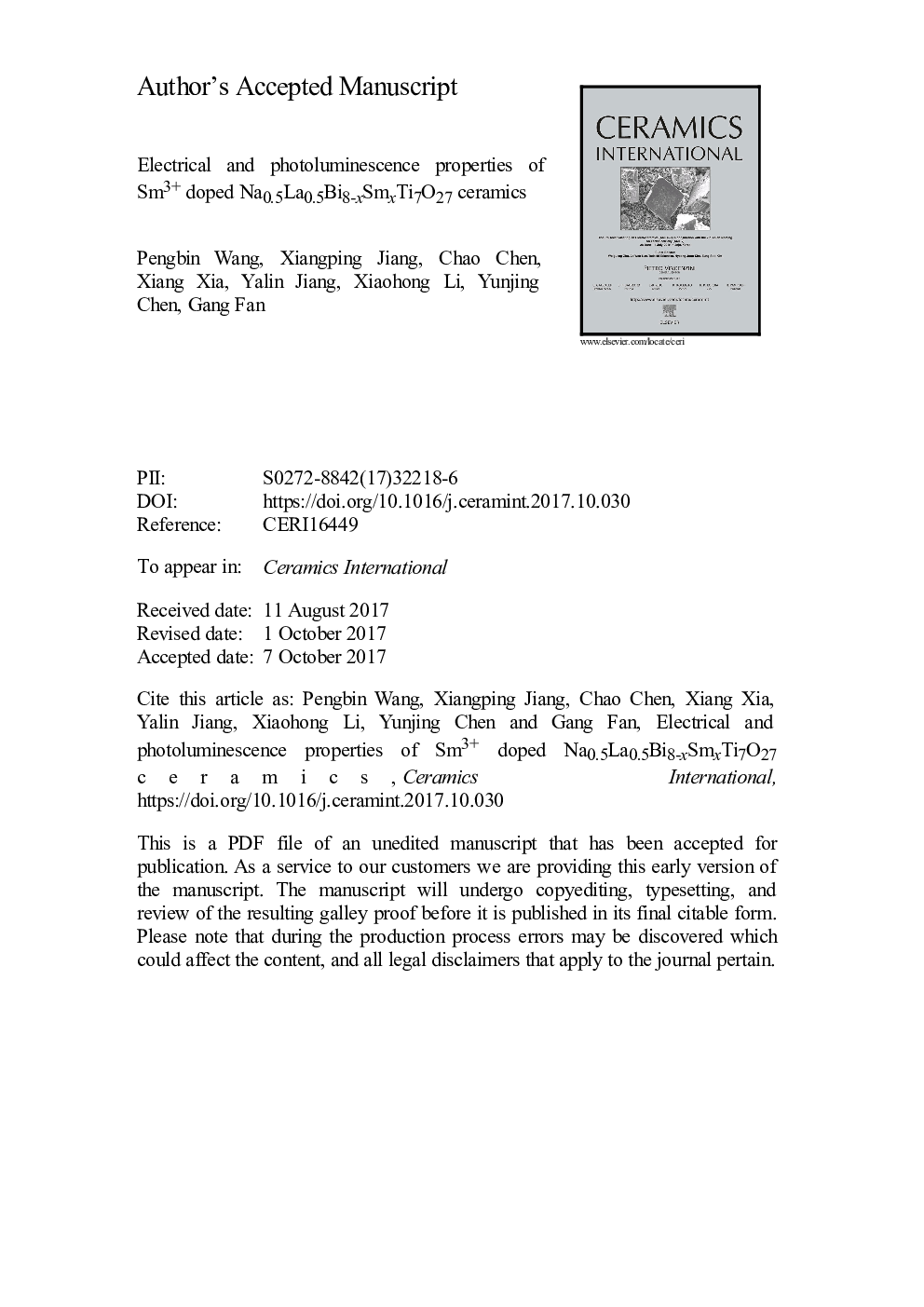| Article ID | Journal | Published Year | Pages | File Type |
|---|---|---|---|---|
| 7888770 | Ceramics International | 2018 | 29 Pages |
Abstract
In this study, Sm3+ doped Na0.5La0.5Bi8-xSmxTi7O27 (NBT-BITL-xSm, x = 0, 0.01, 0.015, 0.02, and 0.03) ceramics were synthesized via a conventional solid-state reaction process. The structural, electrical, and photoluminescence properties of NBT-BITL-xSm ceramics were systematically investigated. The crystal structure of NBT-BITL-xSm was refined using XRD Rietveld refinement and found to possess a single orthorhombic structure at room temperature. Raman spectroscopy revealed that Sm3+ ions preferred to substitute for Bi3+ located in the A-sites of pseudo-perovskite layers, inducing a slight decrease in orthorhombic distortion. Strong characteristic emission peaks of Sm3+ ions were observed in orange-red regions under a 407Â nm laser source, and the sample with x = 0.015 achieved the optimal photoluminescent property. Dielectric measurements showed double anomaly permittivity peaks at the temperature of 589 and 600âC (Tm and Tc, respectively). The complex impedance spectrum indicated that the electrical conductivities mainly originated from crystal grains at high temperature. The activation energy was calculated to be 1.37-1.44Â eV from Arrhenius fitting results. After Sm3+ substitution, the activation energy for conductivity was increased as a result of reduced oxygen vacancies.
Related Topics
Physical Sciences and Engineering
Materials Science
Ceramics and Composites
Authors
Pengbin Wang, Xiangping Jiang, Chao Chen, Xiang Xia, Yalin Jiang, Xiaohong Li, Yunjing Chen, Gang Fan,
